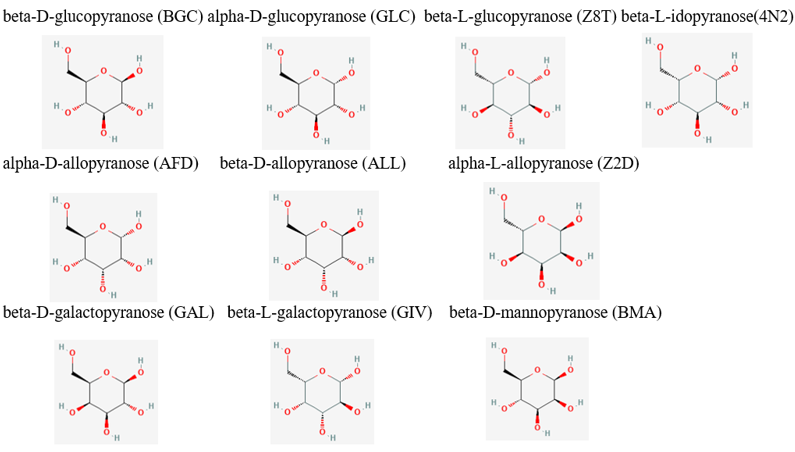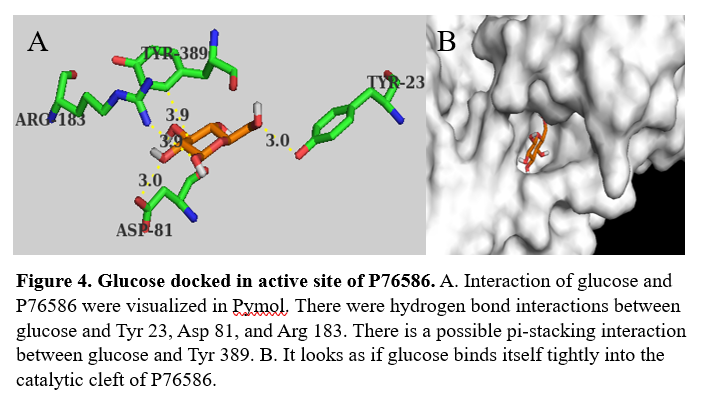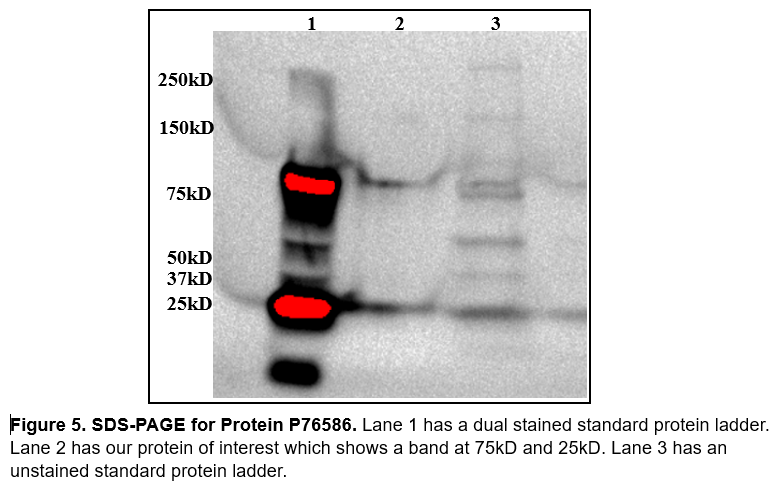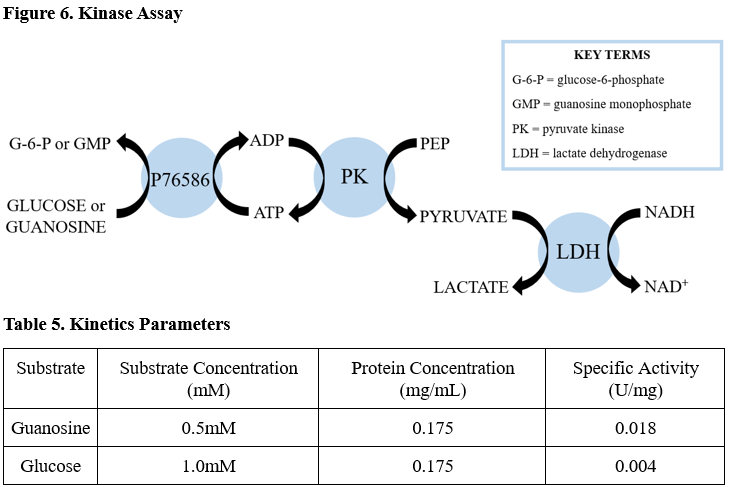BASIL2023GVP76586
From Proteopedia
(Difference between revisions)
| (6 intermediate revisions not shown.) | |||
| Line 1: | Line 1: | ||
== Investigating the Function of Protein P76586 == | == Investigating the Function of Protein P76586 == | ||
<StructureSection load='1stp' size='340' side='right' caption='Caption for this structure' scene=''> | <StructureSection load='1stp' size='340' side='right' caption='Caption for this structure' scene=''> | ||
| - | + | ||
| - | + | ||
== The Initial Search == | == The Initial Search == | ||
| Line 27: | Line 26: | ||
[[Image:Docked_glucose.png]] | [[Image:Docked_glucose.png]] | ||
==Structural Highlights== | ==Structural Highlights== | ||
| - | <scene name='95/957646/Globular_structure/1'>P76586 is a globular protein</scene> with 397 amino acids. It's secondary structure is made up of alpha helices, beta sheets | + | <scene name='95/957646/Globular_structure/1'>P76586 is a globular protein</scene> with 397 amino acids. It's <scene name='95/957646/Secondary_structure/1'>secondary structure</scene> is made up of mostly alpha helices, but also has beta sheets and random coil. Through docking we were able to identify possible amino acids involved in the <scene name='95/957646/Active_site/1'>active site</scene> of P76586. Potential amino acids in the active site are Tyr23, Asp81, Arg183, Gln393, and Tyr389. |
== Results == | == Results == | ||
| - | Our protein of interest has a weight of ≈44.53kD. When analyzing SDS PAGE (figure 5) we were slightly concerned we weren't working with our protein of interest. We didn't get a great image out of SDS, if there were more time we would run again with more protein in the well so that we could see it better. We also made the mistake of not including our induction samples and our fractions from protein purification using | + | Our protein of interest has a weight of ≈44.53kD. When analyzing SDS PAGE (figure 5) we were slightly concerned we weren't working with our protein of interest. We didn't get a great image out of SDS, if there were more time we would run again with more protein in the well so that we could see it better. We also made the mistake of not including our induction samples and our fractions from protein purification using Nickle affinity chromatography. The band at 75kD and 25kD we believe are there from the imaging and is not from our actual protein sample. |
[[Image:SDS.png]] | [[Image:SDS.png]] | ||
| - | We ran two coupled kinase assays, one with glucose and one with guanosine. After calculating the specific activity of our protein with glucose and guanosine we determined there was not enough activity for glucose or guanosine to be the substrate ( | + | We ran two coupled kinase assays, one with glucose and one with guanosine. After calculating the specific activity of our protein with glucose and guanosine we determined there was not enough activity for glucose or guanosine to be the substrate (table 5). We didn't have to modify the kinase assay protocol for Abl Kinase other than changing the substrate and ensuring we were using a high enough substrate concentration that was greater than the protein concentration. |
| - | [[Image: | + | [[Image:Kinase_assay.png]] |
== Conclusions == | == Conclusions == | ||
| - | + | Although we determined that neither glucose or guanosine were the substrate for P76586, we are unsure if this may have been from experimental error. But looking back at the docking results I think we should have tried a wider range of substrates. Maybe a substrate that had closer hydrogen bond interactions. If we were to continue our research we would spend much more time on the docking portion in order to really dissect the active site and its interactions with the substrates. Overall this research experience was really educational and we gained a lot of skills from working in the lab and working as a team. | |
</StructureSection> | </StructureSection> | ||
== References == | == References == | ||
<references/> | <references/> | ||
| + | |||
| + | |||
| + | The use of JSmol in Proteopedia <ref>DOI 10.1002/ijch.201300024</ref> | ||
| + | |||
| + | UniProt data for protein P76586. https://www.uniprot.org/uniprotkb/P76586/entry | ||
Current revision
Investigating the Function of Protein P76586
| |||||||||||
References
The use of JSmol in Proteopedia [1]
UniProt data for protein P76586. https://www.uniprot.org/uniprotkb/P76586/entry







